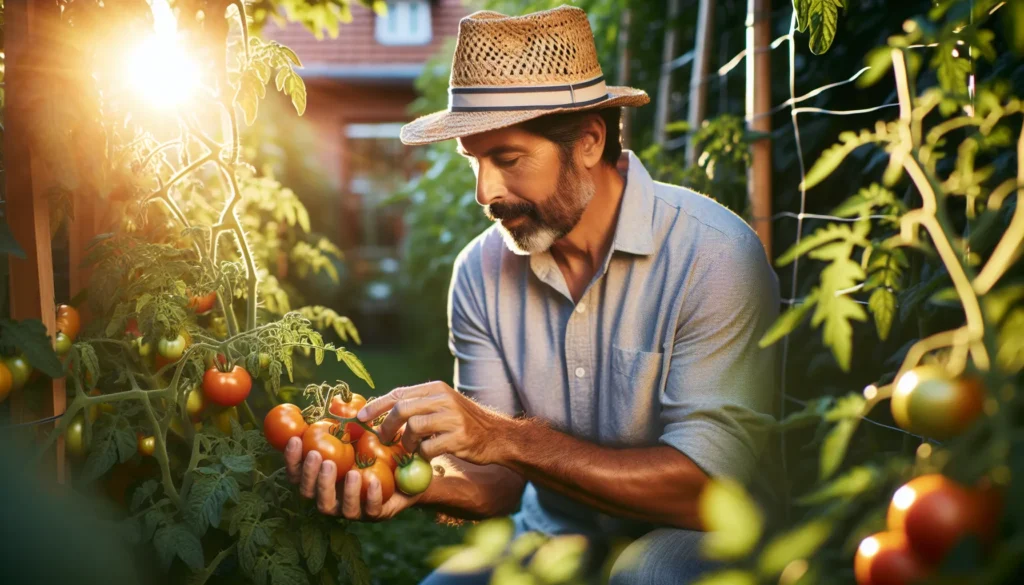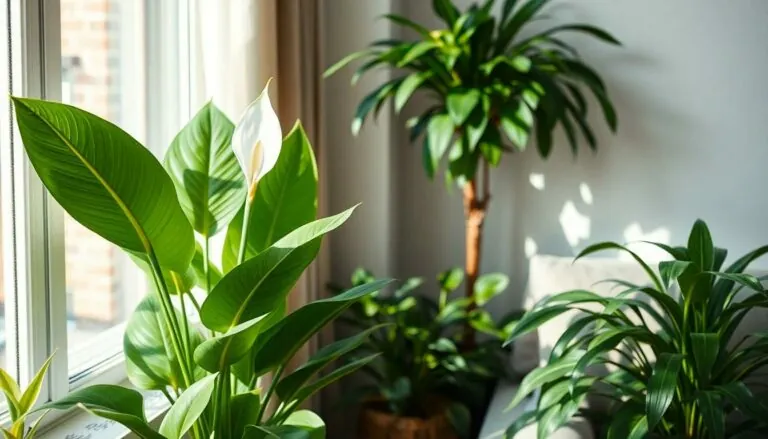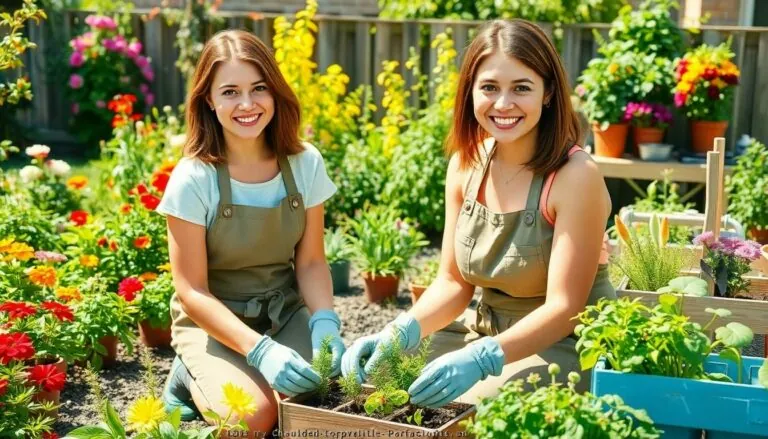Table of Contents
ToggleGrowing cherry tomatoes can turn any backyard into a mini farm, and who wouldn’t want to pluck juicy, sweet gems right from their own garden? These little bursts of flavor are not just delicious; they’re also surprisingly easy to grow. But like any diva, cherry tomato plants require a bit of pampering to thrive.
Cherry Tomato Plant Care: An Overview
Cherry tomato plants require several key elements for optimal growth. Regular watering keeps the soil consistently moist, but plants shouldn’t sit in waterlogged conditions. Aim for about 1 inch of water per week, adjusting based on rainfall and temperature.
Nutrients play a vital role in the plant’s development. Use a balanced fertilizer, providing essential nutrients throughout the growing season. Apply fertilizer according to package instructions, typically every 4 to 6 weeks.
Sunlight is crucial for cherry tomatoes. These plants thrive with at least 6 to 8 hours of direct sunlight daily. Positioning them in a sunny location boosts fruit production and enhances flavor.
Pruning helps manage plant growth and airflow. Remove suckers, which are small shoots that develop between the main stem and branches. Focus on pruning below the first flower cluster to encourage fruiting.
Staking or caging supports cherry tomato plants as they grow. Utilizing stakes keeps branches upright, preventing breakage from heavy fruit. Tomato cages offer an alternative support system, allowing plants to spread while maintaining structure.
Pest management provides protection against common threats. Regularly inspect plants for aphids, spider mites, or whiteflies. Applying insecticidal soap or neem oil addresses pest issues effectively and keeps plants healthy.
Disease prevention is essential for thriving cherry tomato plants. Proper spacing promotes airflow, reducing the risk of fungal diseases. Consider crop rotation and resistant varieties to limit disease impact in future growing seasons.
Choosing the Right Variety
Selecting the appropriate cherry tomato variety plays a significant role in successful cultivation. This choice affects not only yield but also flavor and growth habits.
Determinate vs. Indeterminate
Determinate varieties grow to a certain height and produce fruit all at once, making them ideal for those wanting a quick harvest. Indeterminate types, on the other hand, continue to grow and produce throughout the season, providing a steady supply of tomatoes. Each type offers unique advantages depending on space and harvesting preferences. Heirloom varieties often feature robust flavors, while hybrid options tend to yield more fruit under diverse conditions.
Popular Varieties to Consider
Several popular cherry tomato varieties suit various gardening needs. ‘Sweet 100’ delivers a high yield of exceptionally sweet fruits. ‘Tiny Tim’ offers compact growth, perfect for container gardening. ‘Sun Gold’ features bright orange fruits and a rich taste that gardeners rave about. ‘Black Cherry’ offers a unique appearance along with a robust, tangy flavor. Selecting from these varieties can optimize garden output while catering to individual taste preferences.
Soil and Fertilization
Cherry tomato plants thrive in well-draining soil rich in organic matter. Good drainage prevents root rot and maintains healthy growth. A pH level between 6.0 and 6.8 serves as ideal for optimal nutrient uptake.
Ideal Soil Conditions
He’s looking for soil that retains moisture yet drains well. A mix of loamy soil and amendments like compost enhances nutrients. Nutritional balance supports healthy root development and vibrant fruit production. Soil temperature must remain around 70°F for best growth outcomes. Testing soil before planting helps identify nutrient levels, guiding further amendments.
Fertilization Tips and Schedule
Balanced fertilization promotes healthy growth and maximizes yields. Applying a balanced fertilizer every 4 to 6 weeks during the growing season offers necessary nutrients. Using a liquid fertilizer can efficiently deliver nutrients directly to the plants. Adjust the fertilization frequency based on growth vigor and fruiting phases. Signs of nutrient deficiency, like yellowing leaves, indicate the need for an immediate response.
Watering Techniques
Maintaining consistent moisture is crucial for cherry tomato plant health. Regular watering encourages robust growth and fruit production. Plants generally require about 1 inch of water weekly. Consistent watering fosters strong root development, ensuring the plants absorb necessary nutrients. Utilizing mulch can help retain soil moisture and regulate temperature.
Importance of Consistent Moisture
Consistent moisture affects overall plant vitality. It promotes even growth and enhances fruit quality. Well-hydrated plants are more resistant to diseases and pests. Irregular watering can lead to stress, affecting yields and fruit flavor. Deep watering encourages roots to grow deeper, improving drought resilience. Adjustments based on weather conditions help meet the plants’ hydration needs.
Signs of Overwatering and Underwatering
Recognizing signs of overwatering and underwatering is essential for optimal plant care. Overwatered plants often display yellowing leaves and root rot. Waterlogged soil creates a suffocating environment for roots. On the other hand, underwatered plants show wilting, drooping leaves, and stunted growth. Soil that dries out too quickly can also lead to blossom end rot. Monitoring these signs can guide effective watering practices to ensure healthy cherry tomato plants.
Pruning and Support
Maintaining cherry tomato plants requires careful pruning and support for optimal growth. Proper techniques enhance airflow and support healthy fruit production.
Why Pruning is Important
Pruning encourages airflow around the plant, reducing moisture buildup that can lead to fungal diseases. It also promotes healthier growth by directing energy toward fruit production instead of excessive foliage. Removing suckers, which are small shoots that grow in the leaf axils, helps manage plant size and improves sunlight exposure. Additionally, regular pruning leads to easier harvesting and better overall plant health. Pruning aims to maximize yield while minimizing disease risk, resulting in a more productive garden.
Different Support Methods
Employing support methods for cherry tomato plants helps them grow upright and stable. Staking involves driving a stake into the ground next to the plant and tying the main stem to it with soft twine. This method works well for indeterminate varieties, allowing for better sunlight and air circulation. Caging is another popular option, using wire cages that surround the plant and provide support. These structures prevent branches from breaking under the weight of ripe tomatoes. Both methods ensure the plants remain tidy and healthy throughout their growing season.
Common Pests and Diseases
Cherry tomato plants can face various pests and diseases that threaten their growth. Understanding how to identify these issues is essential for maintaining plant health.
Identifying Pests
Aphids represent one of the most common pests found on cherry tomato plants. These small insects cluster on leaves and stems, sucking plant sap and leading to stunted growth. Spider mites also pose a threat, leaving fine webs on foliage and causing yellowing leaves. Additionally, whiteflies can create problems, as they excrete honeydew that encourages sooty mold. Recognizing these pests early helps mitigate damage, ensuring a healthier harvest.
Prevention and Treatment Strategies
Implementing preventive strategies greatly reduces the risk of pest infestations. Regularly inspecting plants enables early detection of issues, allowing for timely responses. Introducing beneficial insects, such as ladybugs, can effectively control aphid populations. Applying insecticidal soap or neem oil provides natural treatment options, protecting plants without harming beneficial organisms. Maintaining proper spacing enhances air circulation, reducing fungal diseases. Utilizing crop rotation and practicing good sanitation ensures a lower chance of recurring pest problems in the garden.
Growing cherry tomatoes can be a rewarding experience for any gardener. With the right care and attention, these vibrant plants can produce a bountiful harvest. By ensuring they receive adequate sunlight, water, and nutrients, gardeners set the stage for healthy growth and delicious fruit.
Regular maintenance such as pruning and pest management further enhances plant health and yield. Whether choosing determinate or indeterminate varieties, understanding specific needs can lead to a successful gardening season. Embracing these practices not only fosters a thriving garden but also allows for the enjoyment of fresh cherry tomatoes straight from the vine.






